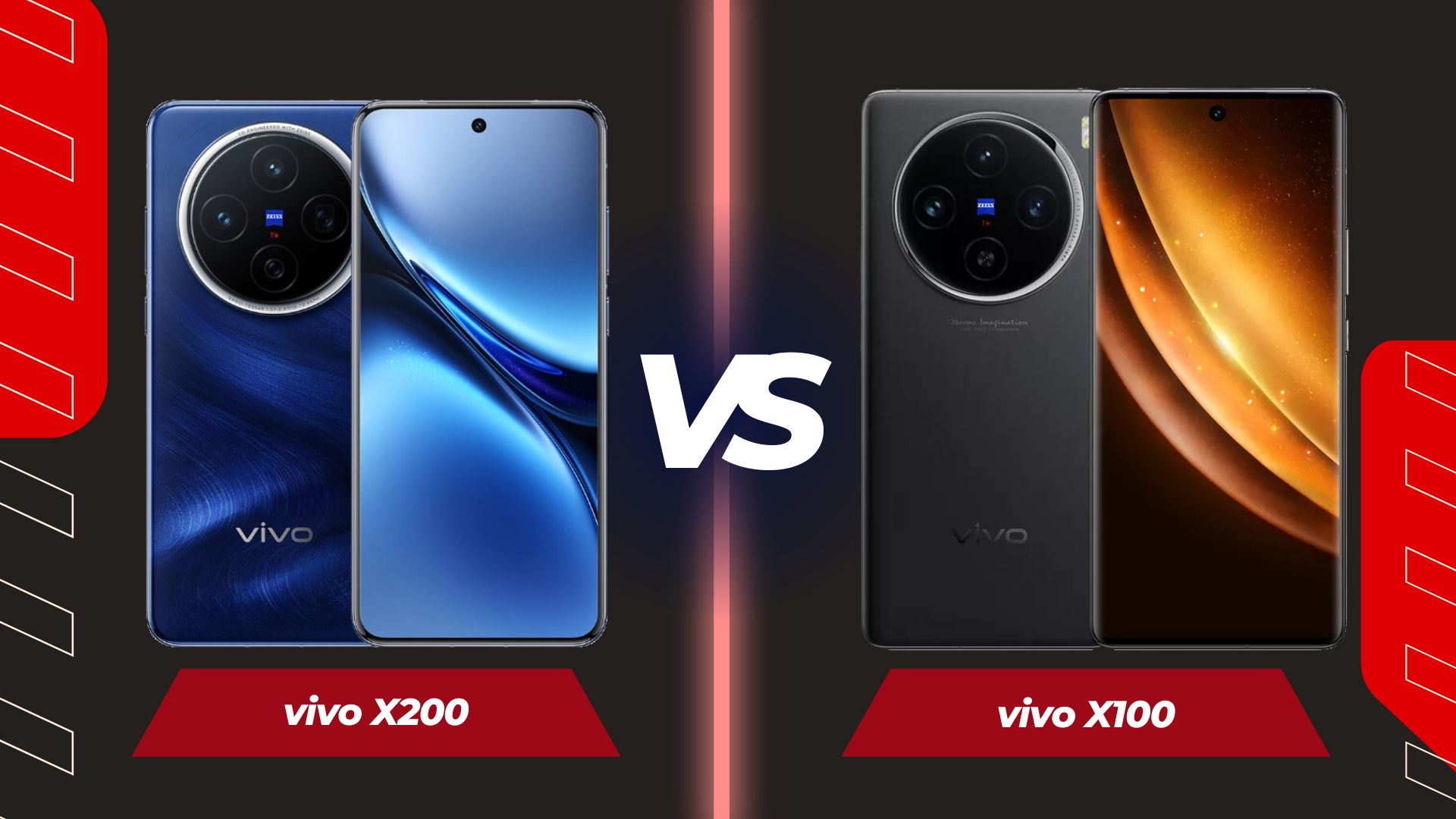
The Vivo X200 and Vivo X100 offer competitive features, each tailored to different user preferences. While both deliver high-quality performance, they diverge in areas like display, camera setup, and charging speed. Here’s a breakdown to help you decide which device suits your lifestyle better.
Design and Dimensions: Vivo X200 vs Vivo X100
The Vivo X200 and Vivo X100 both feature a premium design, with a glass front and back, although the X200 incorporates an aluminum alloy frame, adding to its durability and premium feel. In terms of size, the X100 is slightly larger at 164.1 x 75.2 x 8.5 mm (or 8.8 mm in some variants) compared to the X200’s more compact 160.3 x 74.8 x 8 mm frame. Both phones are nearly identical in weight, with the X200 ranging from 197-202g and the X100 from 202-206g, making them equally substantial in hand.
Display Differences: Vivo X200 vs Vivo X100
The display is where the X200 shines a bit brighter. It sports a 6.67-inch AMOLED display with HDR10+ support and a peak brightness of 4500 nits, which ensures visibility even in intense sunlight. The X100, on the other hand, offers a 6.78-inch LTPO AMOLED display with a slightly lower peak brightness of 3000 nits, making the X200 the better choice for outdoor use. However, both displays run at a smooth 120Hz refresh rate, making them ideal for gaming and scrolling.
Performance and Software: Vivo X200 vs Vivo X100
The X200 operates on Android 15 with OriginOS 5 (in China) and is powered by the MediaTek Dimensity 9400 chipset. The X100, meanwhile, comes with Android 14 and OriginOS 4 (in China) or Funtouch 14 (International), and is built on the slightly less powerful Dimensity 9300 chipset. With higher clock speeds and newer architecture, the X200 provides better processing power, making it a better choice for multitasking and handling demanding applications.
Both models offer UFS 4.0 storage options, ensuring fast data transfer and app loading times, with configurations up to 1TB and 16GB of RAM.
Camera Setup: Vivo X200 vs Vivo X100
In the camera department, both devices offer versatile triple-lens setups but differ in capabilities:
- Vivo X200: Equipped with a 50 MP main camera, a 50 MP periscope telephoto lens with 3x optical zoom, and a 50 MP ultrawide lens, the X200 is ideal for users who want high-quality shots across various scenarios. With features like Laser AF, Zeiss optics, and Zeiss T coating*, it captures impressive detail and color accuracy.
- Vivo X100: Also sports a 50 MP main camera, but with a slightly larger sensor size for improved light capture. It includes a 64 MP periscope telephoto lens with the same 3x optical zoom, providing enhanced clarity. Like the X200, it features Zeiss optics, Laser AF, and allows 3D LUT imports for custom color grading.
For video, both models support 4K and 1080p recording with gyro-EIS, but the X200 takes the edge with higher stability and smoother footage at 60fps for 4K.
Battery and Charging: Vivo X200 vs Vivo X100
Battery life and charging speed differ significantly between the two. The Vivo X200 has a 5800 mAh battery with 90W wired charging, which should provide a reliable daily battery experience, with reverse charging as an added bonus. The X100, on the other hand, packs a slightly smaller 5000 mAh battery, but compensates with 120W wired fast charging that can reach 50% in just 11 minutes (advertised). For users who prioritize rapid charging, the X100’s 120W charging speed is a major advantage.
Audio, Connectivity, and Extras: Vivo X200 vs Vivo X100
Both models include stereo speakers and lack a 3.5mm headphone jack, which is standard for high-end devices these days. Connectivity features are nearly identical, including Wi-Fi 7, Bluetooth 5.4, and GPS, though the X100 has tri-band Wi-Fi support, enhancing connectivity stability. Each device also supports NFC and infrared functions, making them versatile for daily tasks.
Final Verdict:
The Vivo X200 excels in display brightness, newer software, and processing power, making it ideal for those who need high performance and outdoor usability. On the other hand, the Vivo X100 offers faster charging, making it a better choice for users who are always on the go and need quick top-ups. Additionally, the slightly larger sensor in the X100’s main camera could make it more appealing to photography enthusiasts.
In summary, if you’re after cutting-edge display brightness and processing, go for the X200. However, if rapid charging and enhanced camera capabilities are more important to you, the X100 may be your ideal choice.


















